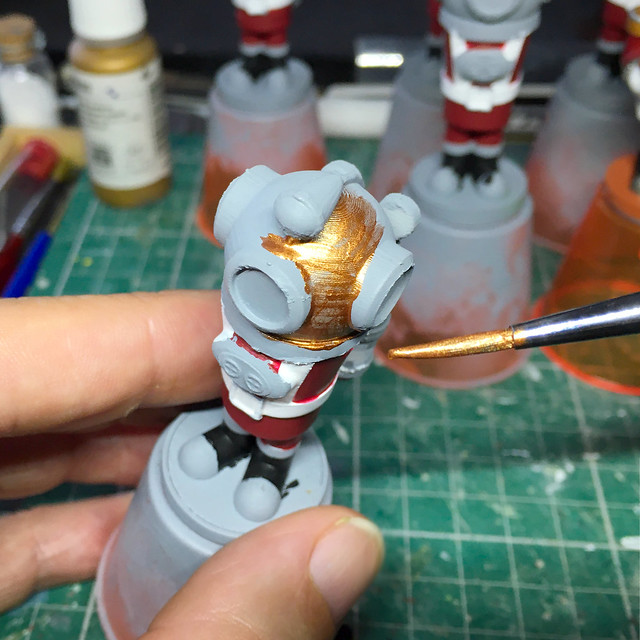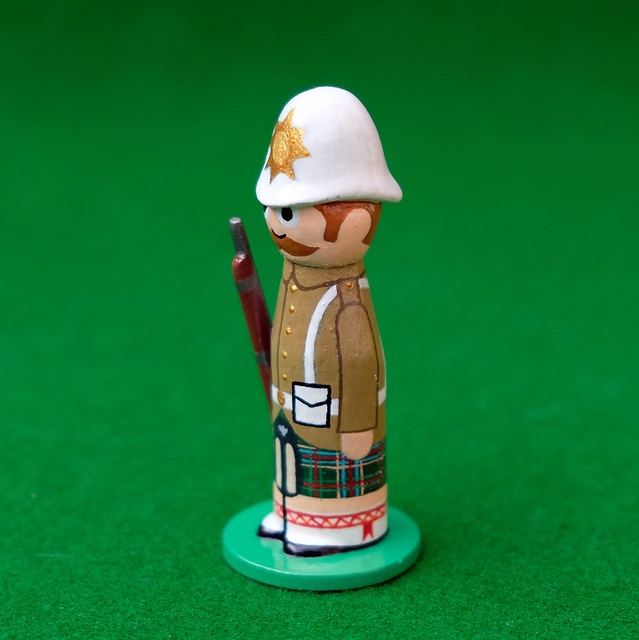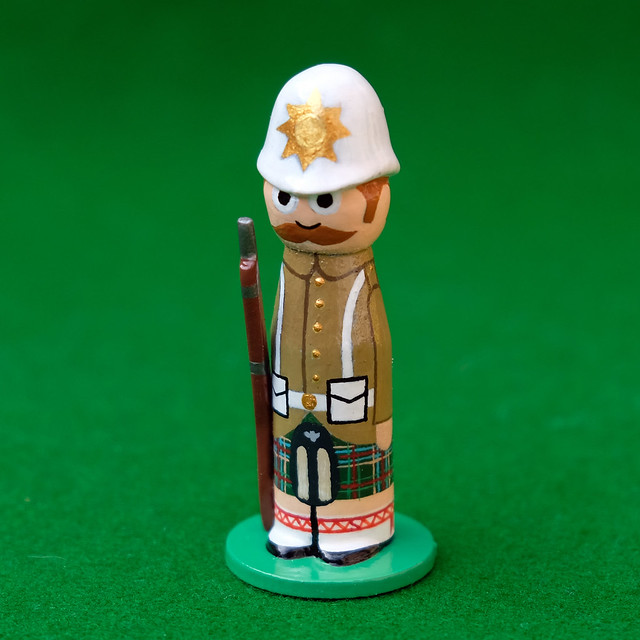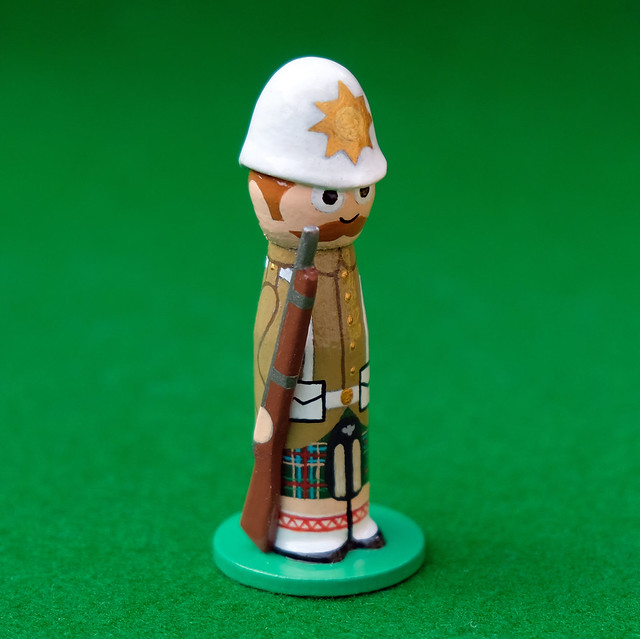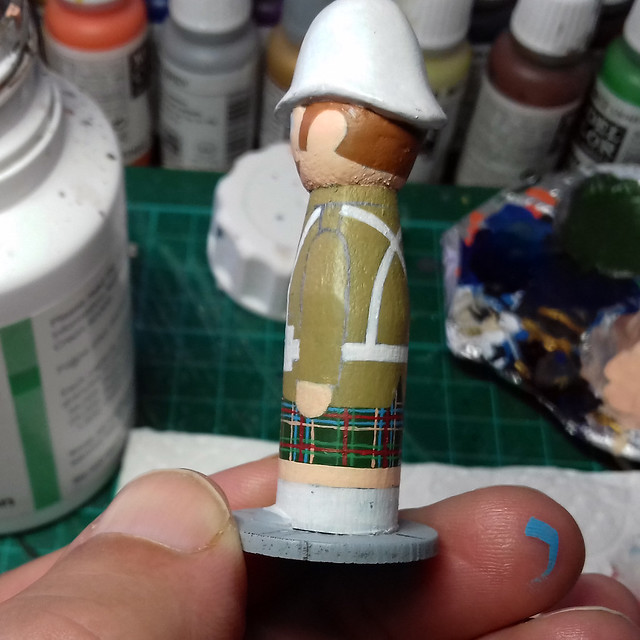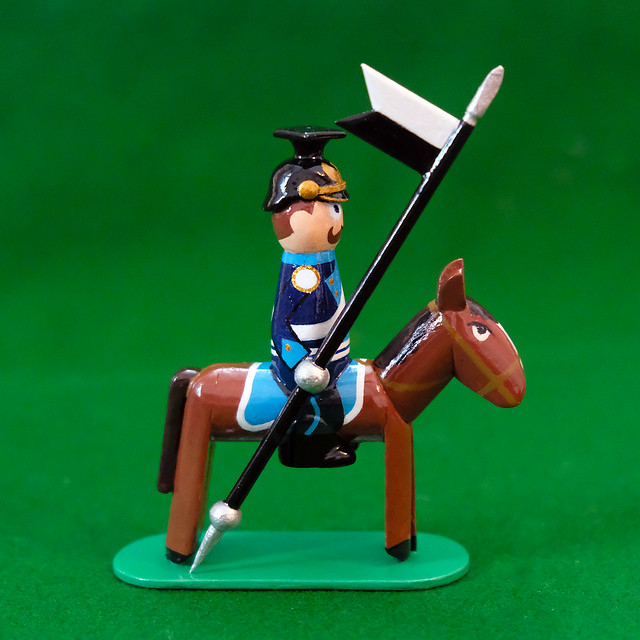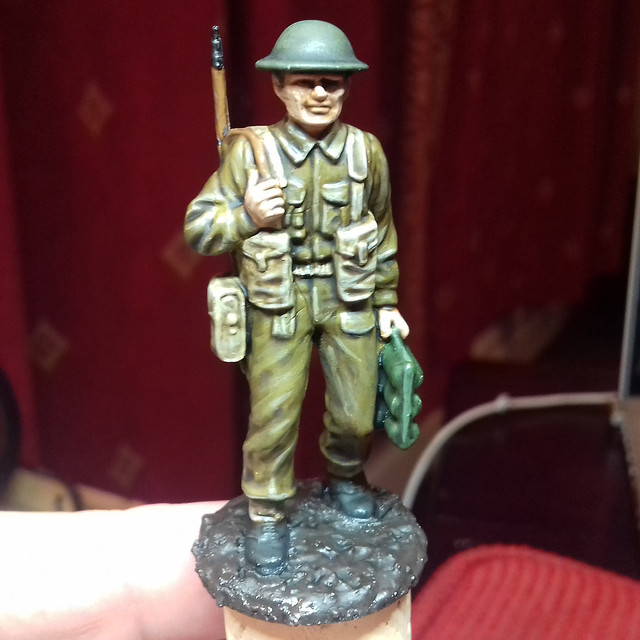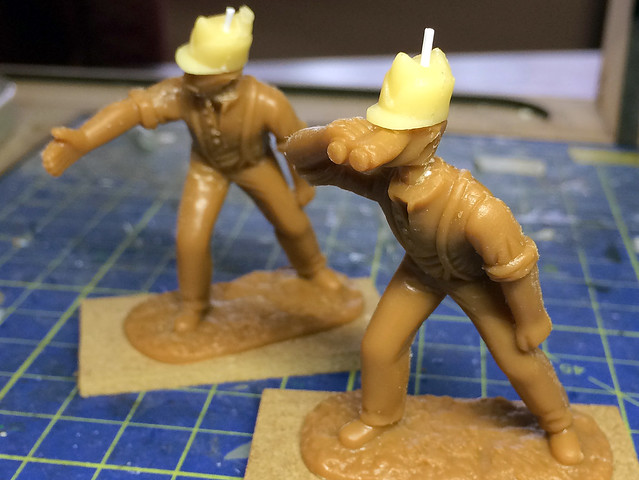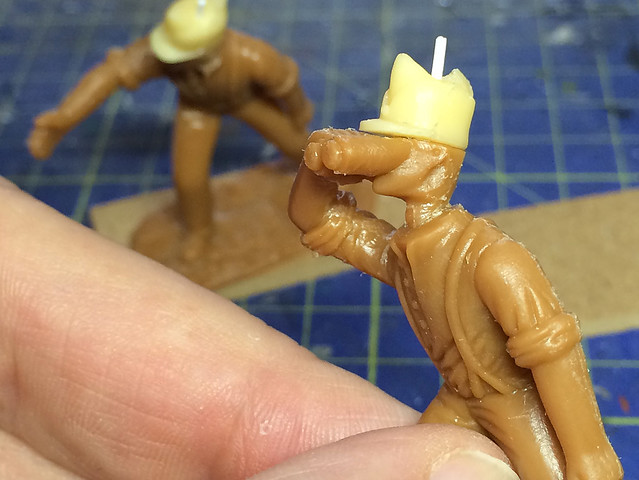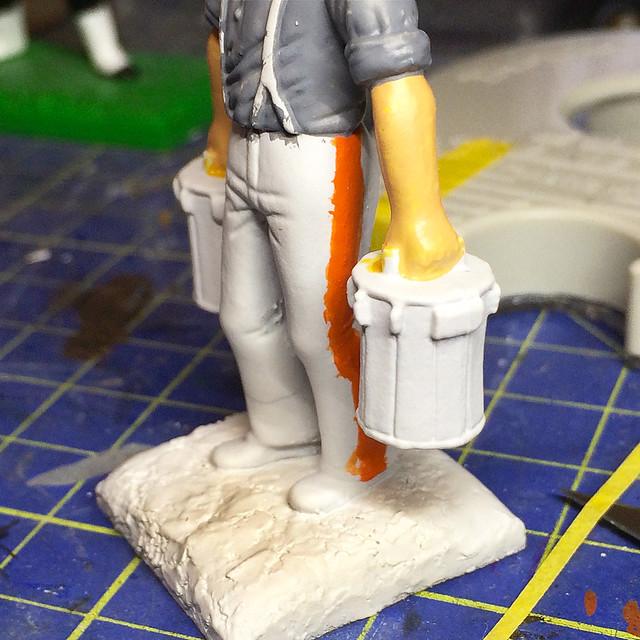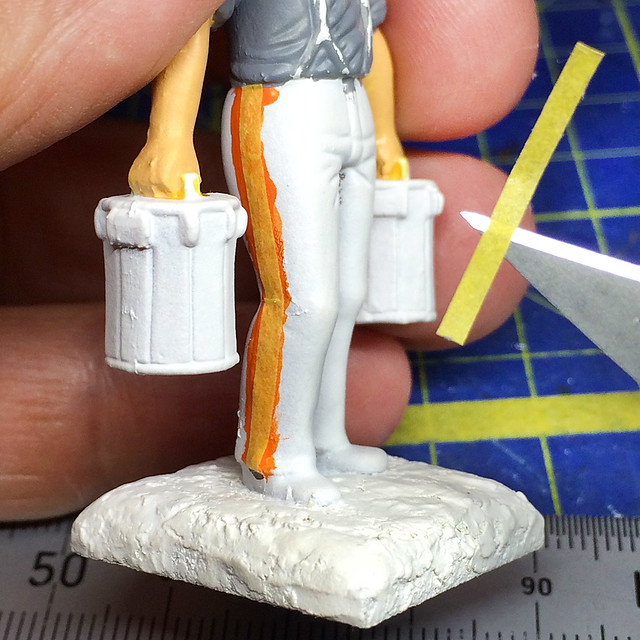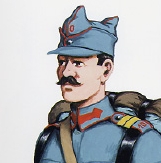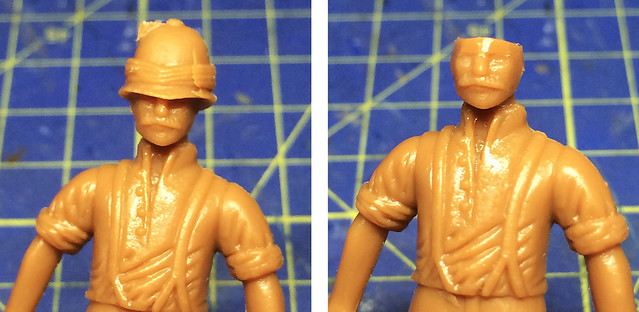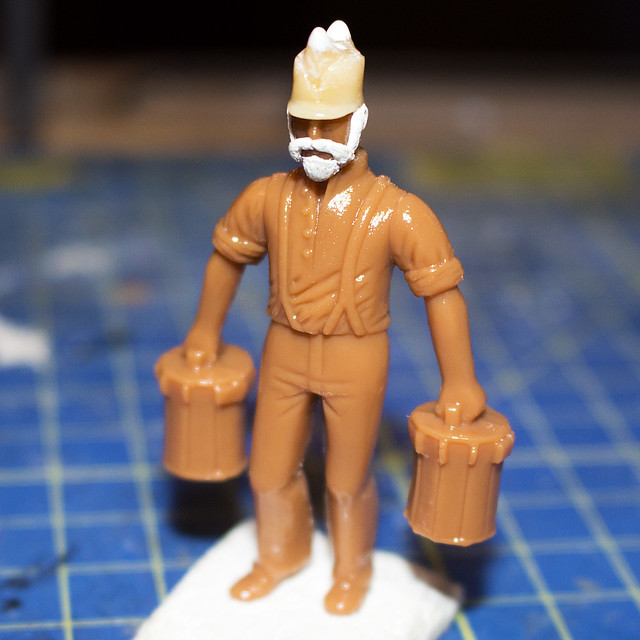I'm juggling projects at the moment (yet another reason it takes me forever to get a job complete) and I've even started a new one! 😆
I've always been a bit of a closet Steampunk fan and particularly like the fantastical yarns by the likes of H.G Wells, Edgar Rice Burroughs and Jules Verne where the conquest of space began - fictionally - in the 19th century! Typical of this type of early science-fiction were stories like 'The First Men in the Moon' (H.G Wells) and the Barsoom Stories (E.R Burroughs) where 19th century adventurers managed - in various ways - to journey to other planets in the Solar System.
 |
Above: Bedford (Edward Judd) and Cavel (Lionel Jeffries) land on the moon in 1899.
Picture from 1964's British movie 'First Men in the Moon'. |
Aside from the fictional stories I have always been tempted by the RPG 'Space 1889', a tabletop role-playing game of Victorian-era space-faring, created by Frank Chadwick...
"The game presented an alternate history in which certain discredited Victorian scientific theories were instead found to be true and have led to the existence of new technologies. In the setting, Thomas Edison invented an "ether propeller" which could propel ships through the "luminiferous aether" (the universal medium that permeates space, based on a now outdated scientific theory)...By the time of the game's setting in 1889, the great powers have used Edison's invention to extend their colonies and interests to the inner planets of the solar system. Venus and Mars have been colonized by the United Kingdom, Germany, France, and Russia. Belgium has only colonized Mars and Italy has only colonized Venus whilst Japan and the United States maintain economic and scientific enclaves on Mars. ..."['Space 1889', Wikipedia.]

The Invasion of Mars - A Table-Top Skirmish
When I started my Molatero blog the original idea was to journal my making of a H.G Well's 'Funny Little Wars' army and it's subsequent use in a war-game. This never actually came off as I was repeatedly disappointed in the figures I acquired for this use. Gradually I moved towards the idea of - first - converting figures to my own liking and then - eventually - to actually making my own figures. This has finally ended up where I am today, making my little 'peg figures' - a style of cartoony looking little chaps that suit my less than serious tongue-in-cheek attitude to the hobby.
However, for a long time now I've been making single stand-alone characters while I perfect my current style of model soldier, so I thought that its a bout time I get back to my original idea - making a little army for use in a table-top game.
 |
Above: There is plenty of inspiration, reference material and even game rules for a
Steampunk/Victorian interplanetary campaign. Osprey Publishing has a few books
that provide a great source of ideas. |
The idea for 'The Invasion of Mars, 1899' - although still generally a concept which I can attribute to H.G Wells - allows me to work on a limited one-off project, while still gaining some experience of making multiple figures and units which I can then later use to make a full blown FLW war-game.
I'll be restricting my armies to limited units of three infantry, one artillery and one cavalry on each side, which I deem achievable even at my slow pace of construction! 😁
Making a Prototype Soldier
As usual, I start working out a new concept by making a prototype figure. In this case I jumped straight in by making one of the central figures for my Victorian Steampunk army by creating a 1889 Aether-Grenadier for my British expeditionary force...
This design is very much influenced on the models I had just created for my 'Assault on Innsmouth' series, where I had created a larger body so I could mouth an oversized head on a modified 'peg' body.
I really liked the idea of making a unit based on the Victoria diving suites as worn in 'The First Men in the Moon'. Game-wise, my notion was this would be a 'heavy, elite unit' which is why I am calling them Grenadiers. These would be armed with heavier weaponry and could add some variation to the look of my British forces.
While this design added a bit more detail than I usually apply to my cartoon-style of pegs, it's still quite simplified and didn't posed much problem to make in TINKERCAD...
Satisfied with the look of this model I 3D printed the component parts out on my Flashforge Adventurer 3 printer. The multipart 'kit' took several individual prints to make as I prefer to try and make print 'jobs' in smaller groups so that I can get the best quality I can (in theory, I could have - perhaps - have printed this model out in one go by using a LOT of print supports, but this could've got quite messy).
This would be a officer figure, so I created a little 'ray gun' but - as a nod to the Victorian Steampunk style - also gave him a sword. 😁
 |
Above: My Space Grenadier (left). You can see how my recent Innsmouth mutant
inspired this bigger than usual 'peg' design. |
Having constructed and primed my 'kit' I noted some things I might change for the rest of the unit but was generally pleased with the way this was going. The rest of my British units would be based on my original, slightly less bulky, peg body design and have different uniforms and equipment - just to mark my grenadiers out as being 'special' (elite).
I then moved onto the painting. Again, this is a kind of prototyping too as I have to work out the colour palette that I will be using. NOW... I don't usually like showing my painting in progress, mainly because it shows off just what a sloppy painter I really am! BUT... I think it's only fair I should show you my process.
Here (above pic) you can see how I apply blocks of colour working from the back (or bottom) most part of the model and work outwards. At this point you can see how I am a bit slap-dash, going over 'lines' and not exactly being very precise! The idea here is that, as I add each additional layer - working outwards - I gradually work a little more neater and effectively cover over any over-painting I may have done on the previous layers. AND SO... In theory, by the time I get to the outermost - top - layer I should end up with a nicely painted little model! (Sorry to disappoint anyone who thought I was - by nature or skill - a good painter. I'm not!) 😂
NEXT: I finish off this prototype and start banging out the rest of the unit.
Edit (17/4/21): The day after I posted the above entry I came across a set of gaming rules that seem absolutely pertinent to my idea of a Steampunk skirmish, these are Osprey's 'In Her Majesty's Name', by Craig Cartmell and Charles Murton and published by Osprey...
Annoyingly, these rules seem to be out of print now (typically) BUT there still seems to be some support and updates for them here: The Ministry of Gentlemanly Warfare


